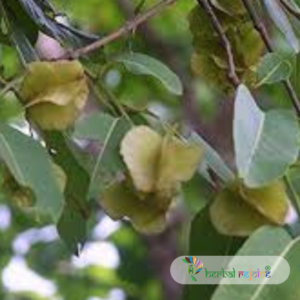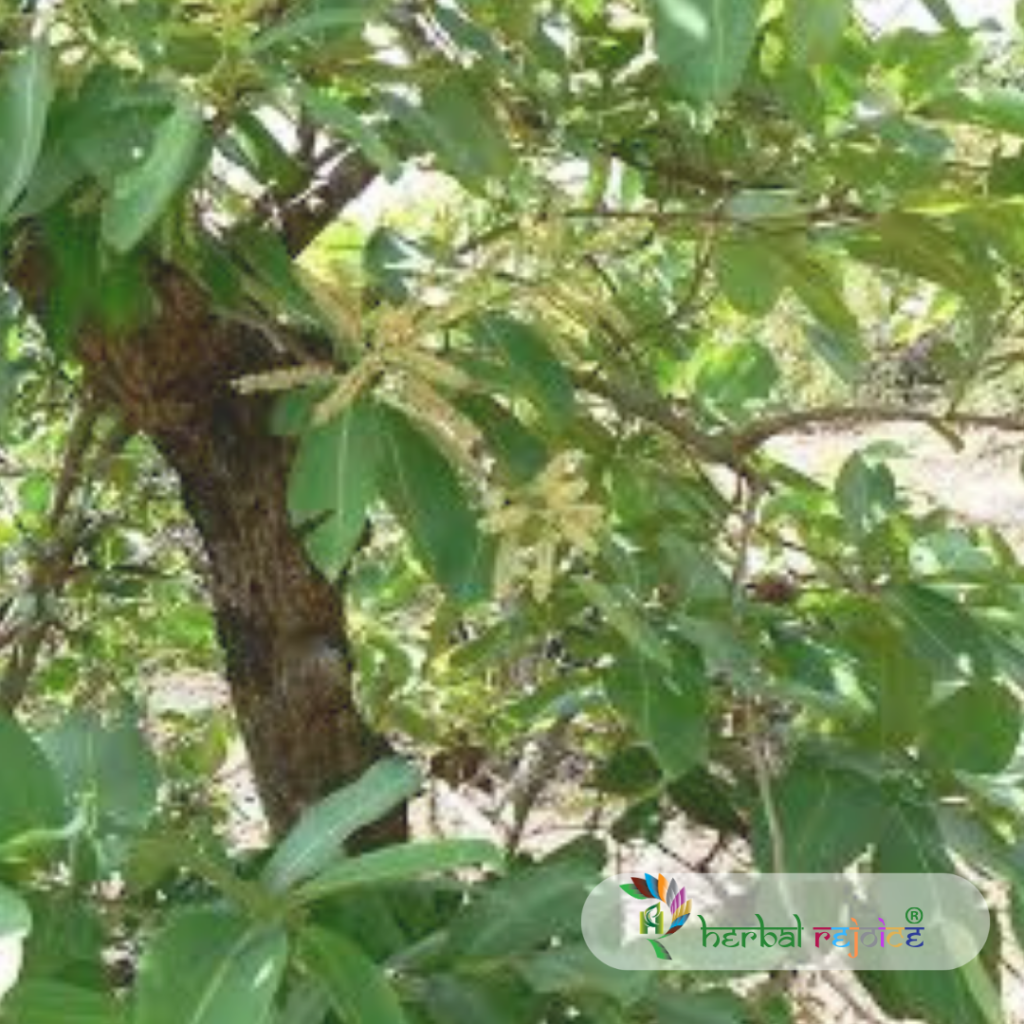Introduction
Terminalia tomentosa, also known as Laurel, is a plant species that belongs to the Combretaceae family. It is commonly found in forests, particularly in humid regions of India, including the sub-Himalayan tracts of North-West provinces, Nepal, and Sikkim. This species can also be found throughout the Peninsula.
In Ayurvedic medicine, Terminalia tomentosa is known as Asana. However, it is also equated with Bridelia montana Willd. and Pterocarpus marsupium Roxb., which are considered as synonyms in Indian medicine. Other doubtful synonyms for Terminalia tomentosa include Jaranadrum, a substitute for Ashwakarna, and Kaushik.
In Siddha and Tamil traditional medicine, Terminalia tomentosa is referred to as Karramarda. In folklore, it is known as Sarj or Saaj. In the Dehra Dun region, it is called Sain.
Medicinal Uses
The bark of Terminalia tomentosa has various medicinal properties. It is known for its astringent, antidiarrheal, styptic, and antileucorrheal properties. It is commonly used for haemorrhagic diseases, skin diseases, erysipelas, and leucoderma. The bark contains approximately 18.7% tannin.
Chemical Constituents
Further studies on Terminalia tomentosa bark have isolated compounds such as beta-sitosterol, arjunic acid, arjunolic acid, arjunetin, betulinic acid, and ellagic acid. The hydrolysis of gum extracted from this plant resulted in the formation of oligo-saccharides, disaccharides, and monosaccharides. Additionally, betasitosterol has been found in the leaves and fruits of Terminalia tomentosa.

It is important to note that Terminalia tomentosa is different from the Mediterranean plant species Laurus nobilis Linn. (Lauraceae), which is commonly referred to as Laurel. Despite the similar name, these two plants are distinct from each other. In Laurus nobilis, the leaves and essential oil are known for their stomachic, cholagogue, stimulant, and diaphoretic properties. The oil derived from Laurus nobilis has been traditionally used to treat dandruff and rheumatism when applied externally.
Conclusion
In conclusion, Terminalia tomentosa, also known as Laurel, is a plant species found in the forests of India. It has various medicinal properties and is commonly used in traditional medicine. However, it should not be confused with the Mediterranean plant species Laurus nobilis. The proper identification and usage of these plants can help in harnessing their potential health benefits.
Frequently Asked Questions
What is Terminalia tomentosa?
Terminalia tomentosa is a plant species that belongs to the Combretaceae family and is commonly found in forests in India.
What are the common names for Terminalia tomentosa?
Terminalia tomentosa is commonly known as Laurel, Asana, Karramarda, Sarj, and Sain.
What is the medicinal use of Terminalia tomentosa?
Terminalia tomentosa is known for its medicinal properties, such as being astringent, antidiarrheal, styptic, and antileucorrheal. It is commonly used for haemorrhagic diseases, skin diseases, erysipelas, and leucoderma.
What are some synonyms for Terminalia tomentosa in Indian medicine?
In Indian medicine, Terminalia tomentosa is equated with Bridelia montana Willd. and Pterocarpus marsupium Roxb. Other synonyms include Jaranadrum, Kaushik, and Ashwakarna.
What compounds have been isolated from Terminalia tomentosa bark?
Compounds such as beta-sitosterol, arjunic acid, arjunolic acid, arjunetin, betulinic acid, and ellagic acid have been isolated from Terminalia tomentosa bark.
What is the tannin content of Terminalia tomentosa bark?
The bark of Terminalia tomentosa contains approximately 18.7% tannin.
Is Terminalia tomentosa used in Ayurvedic medicine?
Yes, Terminalia tomentosa is known as Asana in Ayurvedic medicine.
What is the traditional use of Terminalia tomentosa in Siddha and Tamil medicine?
In Siddha and Tamil traditional medicine, Terminalia tomentosa is referred to as Karramarda and is used for various medicinal purposes.
What is the difference between Terminalia tomentosa and Laurus nobilis?
Terminalia tomentosa is a plant species found in India, while Laurus nobilis is a Mediterranean plant species. They have different properties and uses.
What are the properties of Laurus nobilis?
The leaves and essential oil of Laurus nobilis are known for their stomachic, cholagogue, stimulant, and diaphoretic properties. The oil is traditionally used to treat dandruff and rheumatism.
Can Terminalia tomentosa be used to treat dandruff and rheumatism?
No, Terminalia tomentosa is not traditionally used for treating dandruff and rheumatism. These uses are associated with the Mediterranean plant species Laurus nobilis.
What is the correct identification of Terminalia tomentosa?
The proper identification of Terminalia tomentosa is important to ensure its correct usage and harness its potential health benefits.
What are the regions in India where Terminalia tomentosa is commonly found?
Terminalia tomentosa is commonly found in the sub-Himalayan tracts of North-West provinces, Nepal, Sikkim, and throughout the Peninsula of India.
Does Terminalia tomentosa have any side effects?
There is no information provided about any potential side effects of Terminalia tomentosa.
Is Terminalia tomentosa a protected plant species?
There is no information provided about the protected status of Terminalia tomentosa.
How can Terminalia tomentosa be used for skin diseases?
Terminalia tomentosa bark can be used for skin diseases, as it has antileucorrheal and styptic properties. It can be prepared as a decoction and applied topically.
Can Terminalia tomentosa be used for internal hemorrhages?
Yes, Terminalia tomentosa is known for its haemorrhagic disease properties and can be used for internal hemorrhages.
Is Terminalia tomentosa used in other traditional medicine systems apart from Ayurvedic and Siddha?
There is no information provided about the use of Terminalia tomentosa in other traditional medicine systems.
Can Terminalia tomentosa be consumed orally?
There is no information provided about the oral consumption of Terminalia tomentosa. It is mainly used topically or as a decoction.


